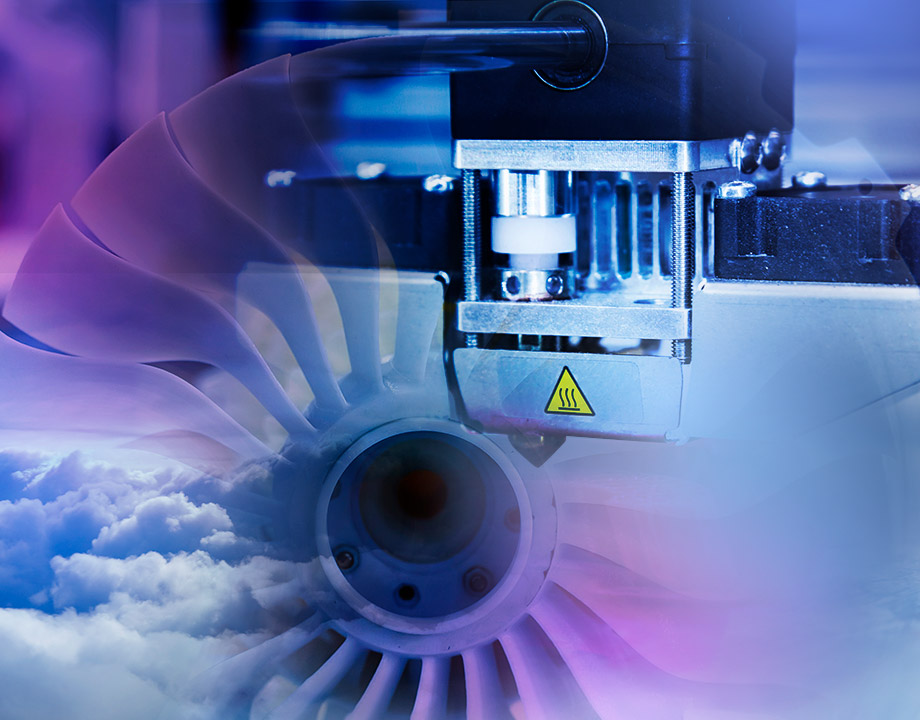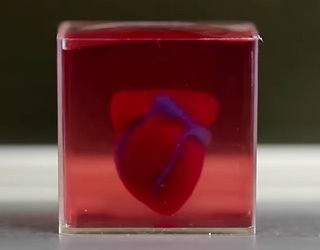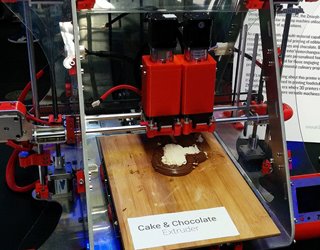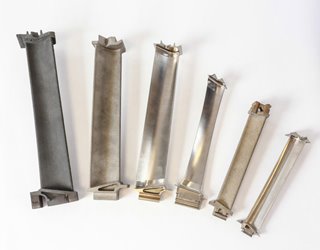6 Innovative Ways to Use 3D Printing
6 Innovative Ways to Use 3D Printing


Using human tissue, scientists have 3D printed a small heart that includes vessels, collagen, and biological molecules. Image: Tel Aviv University
The manufacturing world has been revolutionized by 3D printing (3DP), also known as additive manufacturing (AM). It has increased options for engineers across a range of industries, allowing them to design and build innovative products not possible with traditional manufacturing methods. Forward-Thinking companies believe 3DP/AM will be so disruptive that they have established AM labs for engineers. In these labs, their engineers can master these technologies and focus exclusively on 3DP/AM, to stay ahead of the technology curve.
Recent advances in equipment, material, software, size, and speed—as well as lower purchasing costs—have made 3D printing available to a much more comprehensive range of businesses, enabling them to use AM in new and creative ways, well beyond “just making parts.”
Below are six examples that show the creative power of 3D printing.
1. Casting Molds
One reason AM is favored in manufacturing is the speed in which it makes production-ready parts and products. AM makes prototype parts that can be tested quickly and can be used to cast the molds that hold these parts together, too. Molds can be cast from a variety of materials using 3D printing, even sand. Making molds in-house—instead of outsourcing to mold manufacturers—saves tremendous time and money. For example, print-casting molds take a few weeks with 3D printing compared to six months using traditional molds, which also carry a significant tooling investment.
2. Medical Implants and Organs
3D printing of implants and organs—made from biocompatible and bioresorbable materials—is a medical reality. These products are made using 3D data from detailed scans of a patient’s body. Implantable heart valves and bone grafts have been created using "bio-inks" of living cells that are printed on scaffolds. Living, bio-printed human skin is used to test new drugs and cosmetics, which will eventually eliminate the need for animal testing.
In April 2019, Israeli researchers announced the creation of the world's first 3D-printed heart, using biological material from the patient. According to the team, this is the first time anyone has successfully engineered and printed an entire heart, complete with cells, blood vessels, ventricles, and chambers.
Top Story: 3D Bioprinter Prints Healthy Skin
3. Buildings
3D-printed buildings can be much less expensive and more environmentally friendly than traditional housing. For example, in 2018, construction start-up firm ICON unveiled a 650-square-foot house, complete with multiple rooms and a shaded porch. The structure was assembled in less than 24 hours and cost less than $10,000. 3D-printing of homes and emergency shelters could have immense humanitarian value in response to natural disasters or other emergencies.
4. 3D-Printed Food
One of the hottest sectors in manufacturing is 3D-printing of food, which ranges from pastries to “meatless meat” made from plant-based ingredients. 3D printing can make real animal muscle tissue. Stem cells drawn from a cow via biopsy, are stimulated to produce living muscle cells, which are deposited in multiple layers by a 3D bioprinter and fused together to create meat. Bio-inks can be customized to develop foods with specific textures or nutrient content for individual needs. 3D-printed food could have an impact on relieving hunger around the world, especially when by using abundant and easily sourced food types, such as algae.
You May Also Like: Solving World Hunger with 3D Printed Food
5. Jet Engines
General Electric (GE) uses additive manufacturing to construct complex jet engine components, such as fuel nozzles and turbine blades. In an AM factory in Italy, GE manufactures 3D-printed turbine blades for the GE9X, the world’s largest jet engine. The blades spin inside the engine at 2,500 times per minute and withstand extreme forces and temperatures. The blades are made from titanium aluminide powder, a lightweight, strong, and heat-resistant material that can only be built using AM. "This factory has helped us understand what the art of the possible is with additive manufacturing," says David Joyce, president, and CEO of GE Aviation.
6. Flexible, Stretchable Electronics
Flexible electronics is rapidly expanding in the market, especially for wearable devices. Many new 3D-printed flexible and stretchable sensors can measure touch, compression, pressure, and performance indicators. Electronics can be directly printed onto transitional textiles or clothing that can harvest and store electricity. A research team at the University of Minnesota has 3D-printed a stretchable synthetic skin for robots that is embedded with an array of electronic sensors. “Putting this type of 'bionic skin' on surgical robots would give surgeons the ability to actually feel during minimally invasive surgeries, which would make surgery easier instead of just using cameras like they do now,” said associate professor of mechanical engineering Michael McAlpine.
3DP/AM capabilities continue to expand, and as techniques and materials become increasingly sophisticated, yet easy to use and affordable, it is likely—in the future—that no product design can’t be manufactured through 3DP/AM.
Mark Crawford is a technology writer based in Madison, Wis.
Recent advances in equipment, material, software, size, and speed—as well as lower purchasing costs—have made 3D printing available to a much more comprehensive range of businesses, enabling them to use AM in new and creative ways, well beyond “just making parts.”
Below are six examples that show the creative power of 3D printing.
1. Casting Molds
One reason AM is favored in manufacturing is the speed in which it makes production-ready parts and products. AM makes prototype parts that can be tested quickly and can be used to cast the molds that hold these parts together, too. Molds can be cast from a variety of materials using 3D printing, even sand. Making molds in-house—instead of outsourcing to mold manufacturers—saves tremendous time and money. For example, print-casting molds take a few weeks with 3D printing compared to six months using traditional molds, which also carry a significant tooling investment.
2. Medical Implants and Organs
3D printing of implants and organs—made from biocompatible and bioresorbable materials—is a medical reality. These products are made using 3D data from detailed scans of a patient’s body. Implantable heart valves and bone grafts have been created using "bio-inks" of living cells that are printed on scaffolds. Living, bio-printed human skin is used to test new drugs and cosmetics, which will eventually eliminate the need for animal testing.
In April 2019, Israeli researchers announced the creation of the world's first 3D-printed heart, using biological material from the patient. According to the team, this is the first time anyone has successfully engineered and printed an entire heart, complete with cells, blood vessels, ventricles, and chambers.
Top Story: 3D Bioprinter Prints Healthy Skin
3. Buildings
3D-printed buildings can be much less expensive and more environmentally friendly than traditional housing. For example, in 2018, construction start-up firm ICON unveiled a 650-square-foot house, complete with multiple rooms and a shaded porch. The structure was assembled in less than 24 hours and cost less than $10,000. 3D-printing of homes and emergency shelters could have immense humanitarian value in response to natural disasters or other emergencies.
4. 3D-Printed Food
One of the hottest sectors in manufacturing is 3D-printing of food, which ranges from pastries to “meatless meat” made from plant-based ingredients. 3D printing can make real animal muscle tissue. Stem cells drawn from a cow via biopsy, are stimulated to produce living muscle cells, which are deposited in multiple layers by a 3D bioprinter and fused together to create meat. Bio-inks can be customized to develop foods with specific textures or nutrient content for individual needs. 3D-printed food could have an impact on relieving hunger around the world, especially when by using abundant and easily sourced food types, such as algae.
You May Also Like: Solving World Hunger with 3D Printed Food
5. Jet Engines
General Electric (GE) uses additive manufacturing to construct complex jet engine components, such as fuel nozzles and turbine blades. In an AM factory in Italy, GE manufactures 3D-printed turbine blades for the GE9X, the world’s largest jet engine. The blades spin inside the engine at 2,500 times per minute and withstand extreme forces and temperatures. The blades are made from titanium aluminide powder, a lightweight, strong, and heat-resistant material that can only be built using AM. "This factory has helped us understand what the art of the possible is with additive manufacturing," says David Joyce, president, and CEO of GE Aviation.
6. Flexible, Stretchable Electronics
Flexible electronics is rapidly expanding in the market, especially for wearable devices. Many new 3D-printed flexible and stretchable sensors can measure touch, compression, pressure, and performance indicators. Electronics can be directly printed onto transitional textiles or clothing that can harvest and store electricity. A research team at the University of Minnesota has 3D-printed a stretchable synthetic skin for robots that is embedded with an array of electronic sensors. “Putting this type of 'bionic skin' on surgical robots would give surgeons the ability to actually feel during minimally invasive surgeries, which would make surgery easier instead of just using cameras like they do now,” said associate professor of mechanical engineering Michael McAlpine.
3DP/AM capabilities continue to expand, and as techniques and materials become increasingly sophisticated, yet easy to use and affordable, it is likely—in the future—that no product design can’t be manufactured through 3DP/AM.
Mark Crawford is a technology writer based in Madison, Wis.








